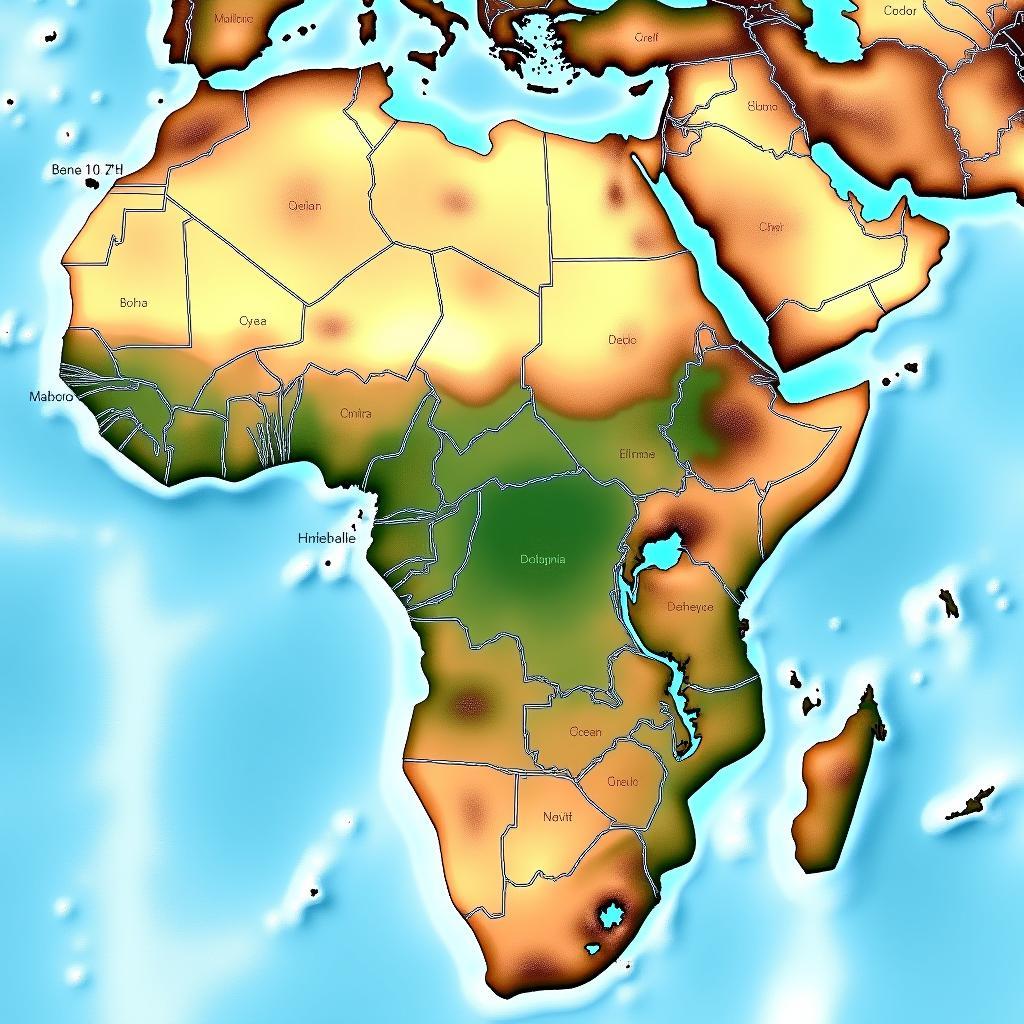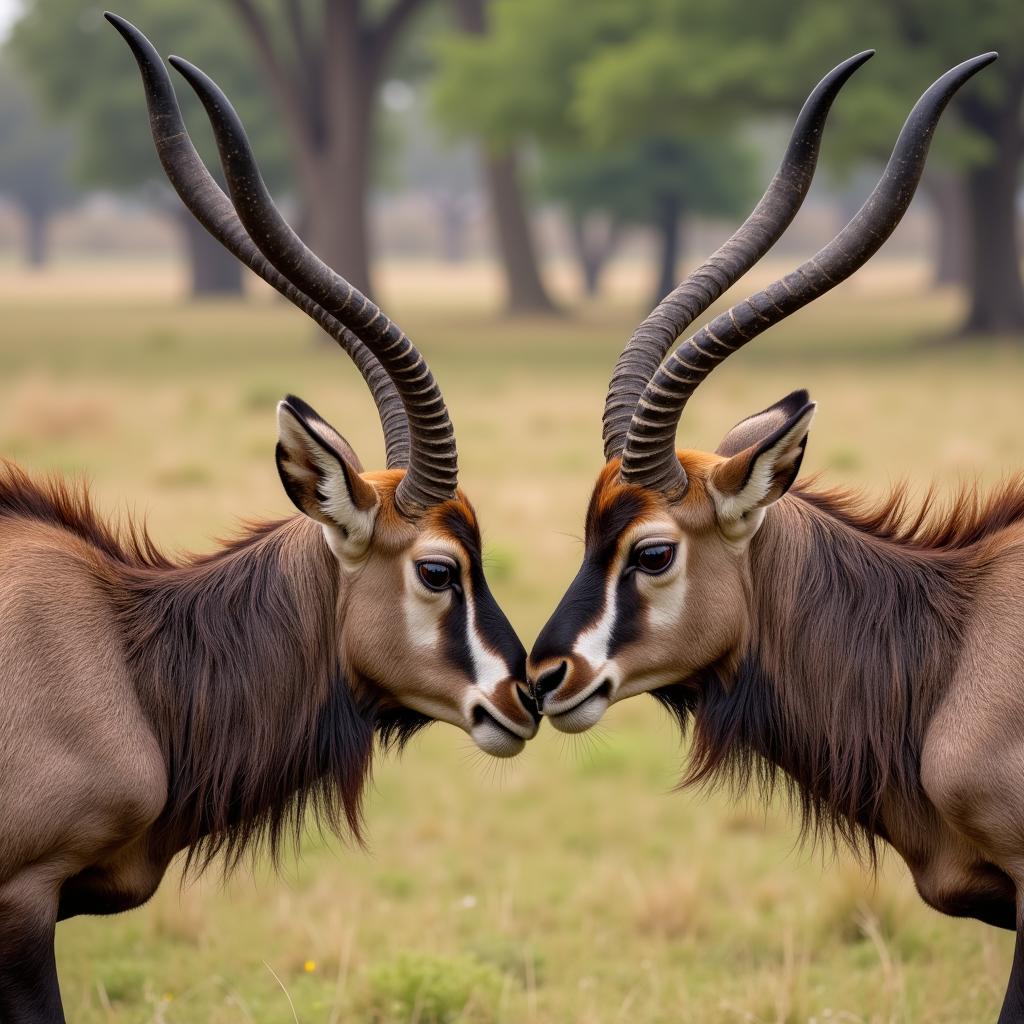Exploring the Wonders of African Cichlids Tanganyika
The vibrant world of African Cichlids Tanganyika beckons aquarists with its diverse and captivating species. These remarkable fish, endemic to Lake Tanganyika, offer a unique blend of beauty, behavior, and evolutionary significance, making them a fascinating addition to any aquarium. This article delves into the captivating world of these cichlids, exploring their diverse species, unique behaviors, and the essential aspects of their care.
Unveiling the Diversity of Tanganyika Cichlids
Lake Tanganyika, the second oldest and second deepest freshwater lake in the world, is a biodiversity hotspot, particularly renowned for its incredible cichlid diversity. Over 250 cichlid species call this lake home, each with its own distinct characteristics, ranging from the brilliantly colored Tropheus species to the shell-dwelling Lamprologus. This remarkable speciation is a testament to the lake’s age and varied habitats, offering a living laboratory of evolution. From the rocky shores to the sandy depths, different cichlid species have adapted to specific niches, developing unique feeding strategies and social structures. For instance, the Cyphotilapia frontosa, a majestic cichlid with a prominent hump on its head, prefers deeper waters and feeds primarily on small fish, while the Julidochromis species graze on algae in the rocky shallows.
Aquarists are drawn to African cichlids Tanganyika not just for their beauty, but also for their engaging behaviors. Many species are highly social and exhibit complex interactions, including intricate courtship rituals and territorial displays. Observing these behaviors in a well-maintained aquarium can be a rewarding experience.
After this introductory overview of Tanganyika cichlids, it’s worth considering the different types of African cichlids available for aquariums. For a broader perspective on African cichlids, check out this resource on african cichlids big.
Setting up the Perfect Tanganyika Cichlid Aquarium
Creating a suitable habitat for African cichlids Tanganyika requires careful consideration of their natural environment. Lake Tanganyika’s water is hard and alkaline, and maintaining these parameters in the aquarium is crucial for the fishes’ health and well-being. A robust filtration system and regular water changes are essential for maintaining water quality.
The aquarium should also replicate the rocky and sandy substrate found in the lake. Rocks and caves provide essential hiding places and territories for the cichlids, promoting natural behaviors and reducing stress.
Knowing more about African lakes can be incredibly beneficial when setting up a Tanganyika cichlid tank. Explore the diverse ecosystems of African lakes with this helpful african lakes list.
Feeding and Caring for Your Tanganyika Cichlids
African cichlids Tanganyika have diverse dietary needs, and providing a varied diet is crucial for their health and color vibrancy. While some species are primarily herbivorous, others are carnivorous or omnivorous. Offering a mix of high-quality cichlid pellets, flakes, frozen foods, and occasional live foods will ensure that all dietary requirements are met.
Regular monitoring of water parameters, such as pH, hardness, and ammonia levels, is essential for early detection of any potential problems. Quarantine any new fish before introducing them to the main tank to prevent the spread of diseases.
“Understanding the specific needs of each Tanganyika cichlid species is crucial for their successful care,” advises Dr. Amani Kimambo, a renowned ichthyologist specializing in African cichlids. “Providing a diet that mimics their natural food sources and maintaining optimal water parameters will ensure their health and longevity.”
Maintaining a Thriving Tanganyika Cichlid Community
Many Tanganyika cichlid species are territorial, and careful consideration should be given to tank mates. Choose compatible species that occupy different areas of the tank and have similar dietary requirements. Overcrowding should be avoided as it can lead to aggression and stress. Regular observation of the fish is crucial for identifying any signs of illness or aggression.
A comprehensive list of African fish can be a great resource for choosing suitable tank mates. Explore this helpful list at african fish list.
Conclusion: A Rewarding Journey into the World of African Cichlids Tanganyika
Keeping African cichlids Tanganyika is a rewarding experience that offers a glimpse into the fascinating world of these unique fish. By understanding their specific needs and creating a suitable environment, aquarists can enjoy the vibrant colors, intriguing behaviors, and evolutionary wonders of these remarkable creatures. Embark on this aquatic adventure and discover the captivating allure of African cichlids Tanganyika.
FAQ
- What is the ideal water temperature for Tanganyika cichlids? The ideal temperature range is 75-82°F (24-28°C).
- How often should I perform water changes in a Tanganyika cichlid tank? Weekly water changes of 20-30% are recommended.
- Are Tanganyika cichlids aggressive? Some species can be territorial, so careful selection of tank mates is important.
- What type of filtration is best for Tanganyika cichlids? A canister filter or a combination of canister and sponge filters is recommended.
- Can I keep different species of Tanganyika cichlids together? Yes, but choose compatible species with similar needs and avoid overcrowding.
- What is the lifespan of a Tanganyika cichlid? With proper care, they can live for 5-10 years or even longer.
- What are some common diseases in Tanganyika cichlids? Bloat, ich, and fin rot are some common ailments.
Further Assistance and Resources
If you’re interested in learning more about specific Tanganyika cichlid care, the African butterfly cichlid care guide can be a valuable resource: african butterfly cichlid care.
For those in Florida looking for specialized suppliers, consider checking out african aquatics florida.
Need more help? Contact us! Phone: +255768904061, Email: [email protected] or visit us at Mbarali DC Mawindi, Kangaga, Tanzania. We have a 24/7 customer service team.


